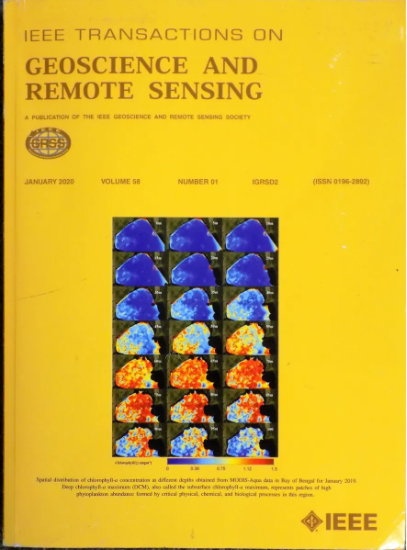利用双分类器对合成孔径雷达图像中的少量舰船进行分类的多分支嵌入网络
IF 7.5
1区 地球科学
Q1 ENGINEERING, ELECTRICAL & ELECTRONIC
IEEE Transactions on Geoscience and Remote Sensing
Pub Date : 2024-11-18
DOI:10.1109/TGRS.2024.3500034
引用次数: 0
摘要
基于合成孔径雷达(SAR)图像的船舶分类是海洋监测领域的一个难题。一方面,SAR遥感船舶数据集中标记样本较少,常用的单一分类准则无法有效表征类别分布;另一方面,由于SAR船舶体积小,外观特征不明显,导致SAR船舶样本的判别信息较少;因此,不能有效地获取舰船的丰富特征空间,增加了目标识别的难度。针对这些问题,提出了一种基于双分类器的多分支嵌入网络(MBEN-BC)模型。首先,利用MBEN模块从多个层次提取输入图像的多尺度特征图空间信息,建立跨通道信息交互,获得局部和全局的判别特征,有效丰富了特征空间;然后,构建BC模块分别从图像级和描述子级对图像特征进行表示,并提出两种分类准则,促进相似样本在特征空间中的分布更加紧凑,从而有效表示标注样本数量较少的类别的分布。利用FUSAR-Ship、Moving and Stationary Target Acquisition and Recognition (MSTAR)数据集和OPENSAR-Ship数据集进行了实验验证,结果表明MBEN-BC方法比目前流行的、最先进的少弹方法具有更好的性能和良好的泛化能力。本文章由计算机程序翻译,如有差异,请以英文原文为准。
A Multibranch Embedding Network With Bi-Classifier for Few-Shot Ship Classification of SAR Images
Ship classification in synthetic aperture radar (SAR) images is a challenge in the field of ocean monitoring. On the one hand, there are few labeled samples in SAR remote sensing ship datasets, and a commonly used single classification criterion cannot effectively represent the distribution of categories. On the other hand, the small size of the SAR ship and the inconspicuous appearance characteristics lead to the fact that the SAR ship samples are with less discriminative information; therefore, the rich feature space of a ship cannot be effectively obtained, which increases the difficulty of target distinguishability. A multibranch embedding network with bi-classifier (MBEN-BC) model was proposed to address these problems and for few-shot SAR ship classification. First, the MBEN module was utilized to extract the multiscale feature map spatial information of the input image at multiple levels and establish cross-channel information interaction so as to obtain discriminative features at the local and global levels, which effectively enriched the feature space. Then, the BC module was constructed to represent the image features from the image level and descriptor level, respectively, and the two classification criteria were presented to promote a more compact distribution of similar samples in the feature space in order to effectively represent the distribution of categories with a small number of labeled samples. Experimental validation was carried out using the FUSAR-Ship, Moving and Stationary Target Acquisition and Recognition (MSTAR) dataset, and OPENSAR-Ship dataset, and the MBEN-BC method achieved superior performance and good generalization ability compared to the current popular and state-of-the-art few-shot methods.
求助全文
通过发布文献求助,成功后即可免费获取论文全文。
去求助
来源期刊

IEEE Transactions on Geoscience and Remote Sensing
工程技术-地球化学与地球物理
CiteScore
11.50
自引率
28.00%
发文量
1912
审稿时长
4.0 months
期刊介绍:
IEEE Transactions on Geoscience and Remote Sensing (TGRS) is a monthly publication that focuses on the theory, concepts, and techniques of science and engineering as applied to sensing the land, oceans, atmosphere, and space; and the processing, interpretation, and dissemination of this information.
 求助内容:
求助内容: 应助结果提醒方式:
应助结果提醒方式:


